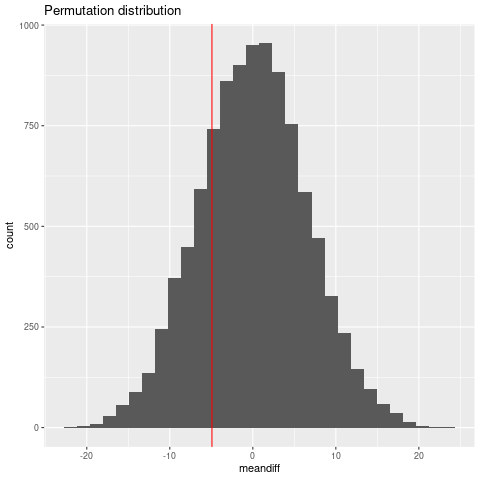The independence requirement for the t-test is not really relevant here, as you have only one students's data (If you had data for more students, that would be more of an issue) ... but there is also an assumption of normal distribution and that is also doubtful here. You cannot use a paired test as this is not paired data.
I would here use a permutation test. Under the assumption that the scoring is the same for science and non-science courses, the labels science, non-science is just like they were attached arbitrarily to the courses. So you can simulate the permutation distribution of the difference of the means, say, by permuting the labels, say, $R=9999$ times, and each time compute the differences of the means. Draw the histogram, and over that, draw the observed difference as a line.
After questions in comments: Why is the independence assumption not relevant in this case with data from only one person? Because of exchangeability. Under the null hypothesis of no difference between groups, the data is exchangeable, see for instance Wilcoxon signed rank test independence assumption and search this site.
So with your example data: First, one should always do some visualizing of the data. For your data, parallel boxplots with data values overlaid is a good choice:

Then we do the permutation test, based on difference in means of the two groups.
meandiff_obs <- diff(with(score_data, tapply(Score, Subject, mean))) # Science - Arts
# Permute 9999 times
perm_dist <- replicate(9999, {tags <- score_data$Subject
scores <- sample(score_data$Score, length(score_data$Score))
diff(tapply(scores, tags, mean))
} )
perm_dist <- data.frame(meandiff=c(perm_dist))
And we can show the results graphically:

with the observed meandiff as a red line.
Another question in comments:
Can you please provide an example where under the null hypothesis of
no difference between two groups of data, data are not exchangeable.
Basically, I suspect that Under the null hypothesis of no difference
between groups, all data are exchangeable. Then, permutation test will
be applicable everywhere.
This is opening a can of worms ... the paper (a review Joan F Box' biography of her father) contains:
There is a difficulty---not described by Box---with randomization
and permutation tests as they are usually worked out when the
experimental layout is at all complex: for example, if it is a
two-way layout. The permutation test typically is based on what might
be called the null null hypothesis3 of identical treatments, or at
least identical distributions for the treatments. Yet another of
Fisher's great contributions is the idea of factorial design with its
associated analysis of vari- ance, in which various kinds of
treatments (e.g., row and column treatments) may be looked at
separately. (See, for example, the discussion on analysis of variance
on p. 110, or of factorial designs on pp. 164-166.) So here we have a
secondary paradox within the larger one over long-run support for
randomization. Indeed, the obscurity about no treatment difference as
the basis for a permutation tests and the untangling of treatment
differences by different factors, interactions, and so on, lay at the
core of the first major confrontation between Fisher and Jerzy Neyman
(Neyman 1935). Neyman in effect pointed out the paradox, and Fisher
retaliated ferociously.
You might consider asking a separate question about this!
For the record, the code for the plots:
library(ggplot2)
ggplot(score_data, aes(Subject, Score)) +
geom_boxplot(notch=TRUE) +
geom_jitter(position=position_jitter(0.03), color="blue") +
ggtitle("Distribution of scores for two kinds of subjects")
ggplot(perm_dist, aes(meandiff)) + geom_histogram() +
geom_vline(xintercept=meandiff_obs, color="red") +
ggtitle("Permutation distribution")
... and for reading the data:
score_data_text <-
" Arts Science
88 20
85 13
84 58
74 66
66 49
53 46
63 42
15 46
28 39
65 15
27 78
75 66
19 81
37 67
85 21
80 55
69 94
20 18
73 24
87 27
58 67
86 71
66 13
19 29
19 18
15 85
52 80
54 17
14 98
59 91
0 24
0 82
0 67
0 49
0 39
0 34
0 92
0 10
0 15
0 77" # Added zeros to simplify reading, to be removed!
score_data <- read.table(textConnection(score_data_text), header=TRUE)
score_data <- as.list(score_data)
score_data$Arts <- with(score_data, Arts[Arts>0])
score_data <- with(score_data, data.frame(Subject=factor(c(rep("Arts", 30), rep("Science", 40))), Score=c(Arts, Science)) )


